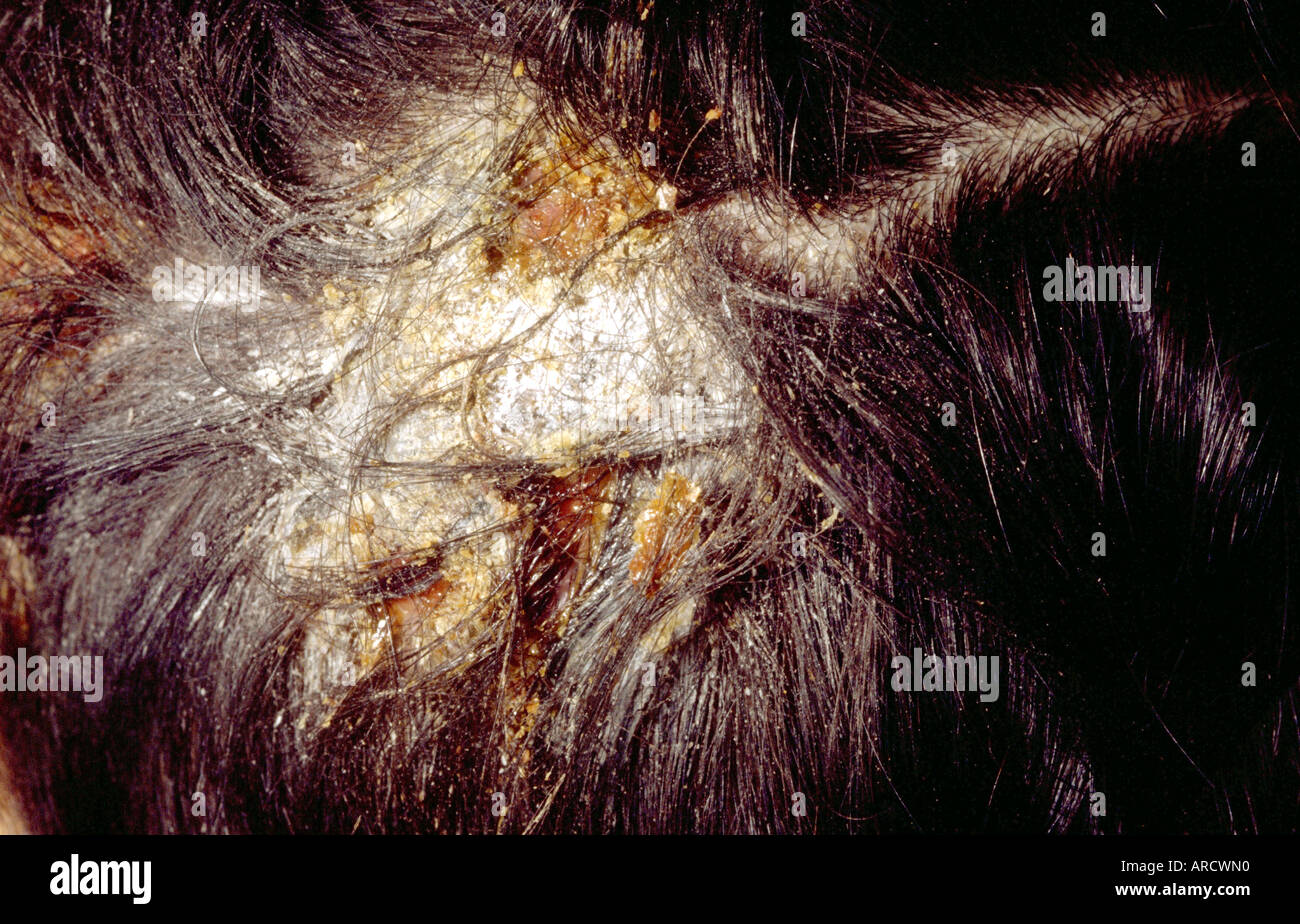

Tinea capitis is caused by a number of species of Trichophyton and Microsporum fungi. This is discussed further under the causes of tinea capitis.

Infections with dermatophyte fungi can also be divided into endothrix, ectothrix or favus infections depending on how the hair shaft is invaded.

The fungi consumes the tissue of the hair shaft and may also involve the outer lying areas of the surrounding skin. Zoophilic fungi are spread to humans through direct contact with animals but is rarely spread from one person to another. It is easily spread from person to person. The anthrophophilic fungi have a predilection for humans and is the more common type seen in tinea infections. Dermatophyte fungi can be divided into anthropophilic and zoophilic fungi.
#Tinea capitis scalp skin
The fungus in tinea capitis primarily affects the hair shaft and follicle, although the skin is also involved, while other tinea infections affect the skin on the different parts of the body. Another common fungal infection known as tinea versicolor is actually an yeast infection mainly affecting the upper body like the neck, chest, upper arms and back. The term tinea faciei more correctly refers to a dermatophyte infection on the skin of the face and tinea corporis on the body. It is mainly seen on the scalp but can extend to the eyebrows and eyelashes. The term tinea capitis means dermatophyte infection ( tinea) of the head ( capitis). The infection is not caused by a worm but by a fungus. The term ringworm came about because the skin rash with a dermatophyte (skin fungus) infection is round to oval in shape with raised borders that gives it the appearance of a ring. Tinea capitis is highly contagious and the fungi can be transmitted from person to person, and in some cases even from animal to person.Ī common term for tinea capitis is ringworm of the scalp. Often there is hair loss at the affected area but in most cases this is temporary and will resolve with proper treatment of the infection. The infection is commonly seen in children and sometimes infants as well but tinea capitis is rare in adults. Commonly tinea capitis is known as scalp ringworm. Tinea capitis is a superficial fungal infection of the scalp skin and hair that may also affect the eyebrows and eyelashes. Yeasts are a different type of skin fungus from dermatophytes but cause a similar type of skin infection. Sometimes these infections are caused by yeasts in which case it is known as pityriasis or candidiasis, depending on the type of yeast that causes the infection. These infection are referred to as tinea. Most of these fungal infections are caused by a type of skin fungus known as dermatophytes. Fungal infections of the skin are common conditions that mainly affect the feet (athlete’s foot) and groin (jock itch).


 0 kommentar(er)
0 kommentar(er)
